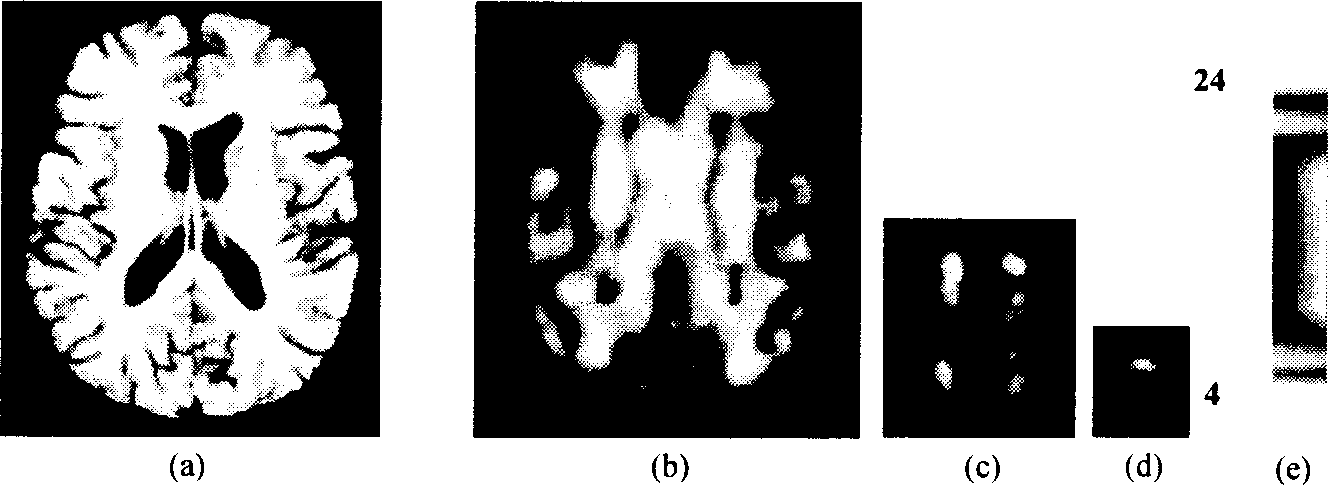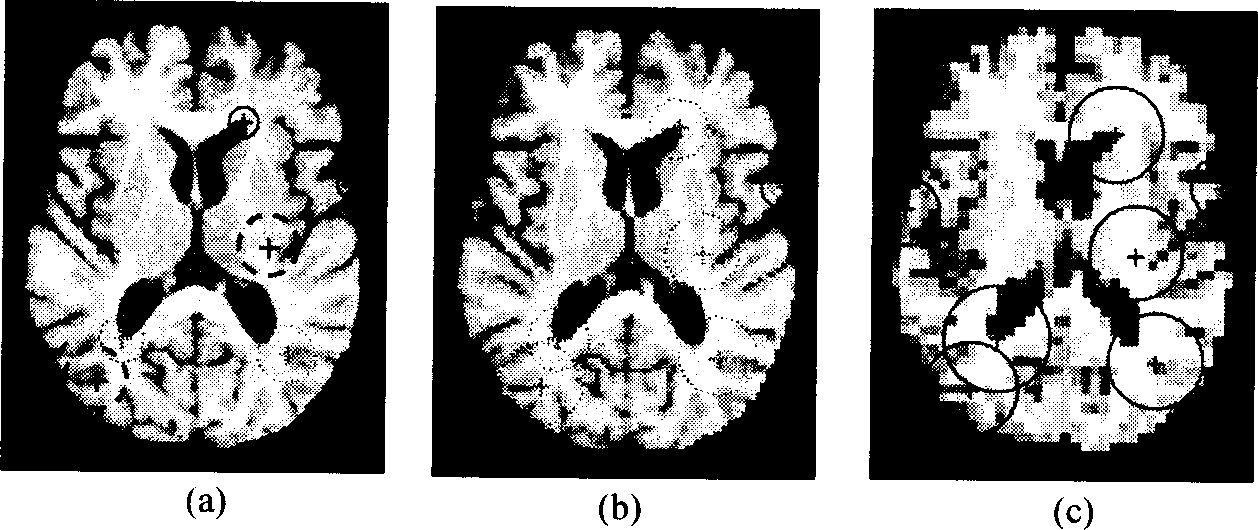Elastic registration method of stereo MRI brain image based on machine learning
A nuclear magnetic resonance and elastic registration technology, which is applied in the fields of sensors, medical science, vaccination and ovulation diagnosis, etc., can solve the problems of difficult to distinguish attribute vectors and slow changes in image grayscale, and achieve improved registration results, improved registration accuracy, The effect of increased accuracy
- Summary
- Abstract
- Description
- Claims
- Application Information
AI Technical Summary
Problems solved by technology
Method used
Image
Examples
Embodiment Construction
[0024] The technical solutions of the present invention will be further described below in conjunction with the accompanying drawings and embodiments.
[0025] This embodiment mainly includes two parts of training and image registration, such as figure 1 shown. In the training phase, the main tasks include determining the optimal attribute vector and picking key points at each point of the reference image. In the image registration stage, the results obtained in the training stage are combined with existing medical image registration algorithms (such as the HAMMER algorithm) to determine the correspondence between the two images. The specific implementation method of the present invention will be further described in detail below in conjunction with the HAMMER algorithm.
[0026] The MR images used in the embodiments are all T1-weighted three-dimensional images. Whole invention realization process is as follows:
[0027] 1. Preparation of training data
[0028] ●Collect M...
PUM
 Login to View More
Login to View More Abstract
Description
Claims
Application Information
 Login to View More
Login to View More - R&D
- Intellectual Property
- Life Sciences
- Materials
- Tech Scout
- Unparalleled Data Quality
- Higher Quality Content
- 60% Fewer Hallucinations
Browse by: Latest US Patents, China's latest patents, Technical Efficacy Thesaurus, Application Domain, Technology Topic, Popular Technical Reports.
© 2025 PatSnap. All rights reserved.Legal|Privacy policy|Modern Slavery Act Transparency Statement|Sitemap|About US| Contact US: help@patsnap.com



